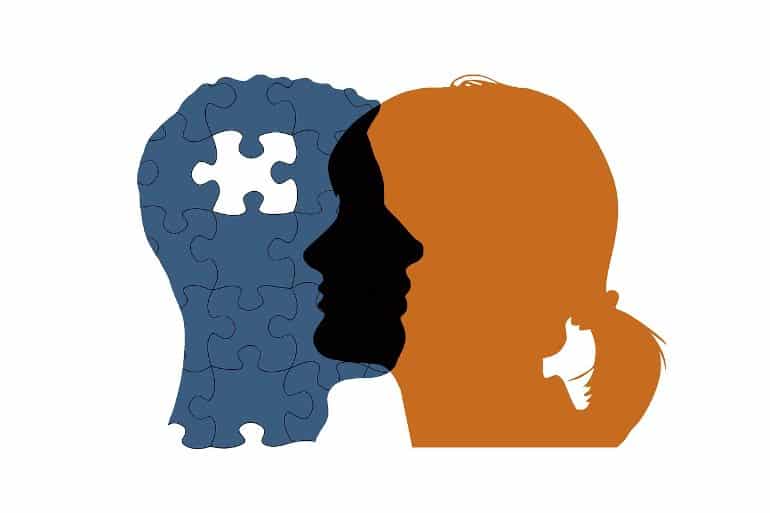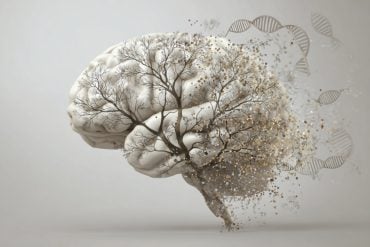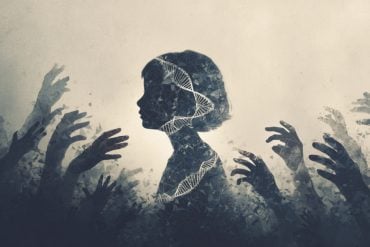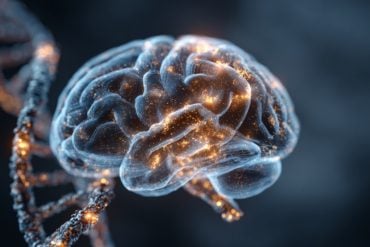Summary: Study reveals the CCR5 gene plays a critical role in linking memories in the brain. The HIV drug maraviroc suppresses the CCR5 gene and may be a potential new treatment to combat memory loss in older adults.
Source: UCLA
Our brains rarely record single memories—instead, they store memories into groups so that the recollection of one significant memory triggers the recall of others connected by time. As we age, however, our brains gradually lose this ability to link related memories.
Now UCLA researchers have discovered a key molecular mechanism behind memory linking. They’ve also identified a way to restore this brain function in middle-aged mice – and an FDA-approved drug that achieves the same thing.
Published in Nature, the findings suggest a new method for strengthening human memory in middle age and a possible early intervention for dementia.
“Our memories are a huge part of who we are,” explained Alcino Silva, a distinguished professor of neurobiology and psychiatry at the David Geffen School of Medicine at UCLA. “The ability to link related experiences teaches how to stay safe and operate successfully in the world.”
A bit of Biology 101: cells are studded with receptors. To enter a cell, a molecule must latch onto its matching receptor, which operates like a doorknob to provide access inside.
The UCLA team focused on a gene called CCR5 that encodes the CCR5 receptor—the same one that HIV hitches a ride on to infect the brain cell and cause memory loss in AIDS patients.
Silva’s lab demonstrated in earlier research that CCR5 expression reduced memory recall.
In the current study, Silva and his colleagues discovered a central mechanism underlying mice’s ability to link their memories of two different cages. A tiny microscope opened a window into the animals’ brains, enabling the scientists to observe neurons firing and creating new memories.
Boosting CCR5 gene expression in the brains of middle-aged mice interfered with memory linking. The animals forgot the connection between the two cages.
When the scientists deleted the CCR5 gene in the animals, the mice were able to link memories that normal mice could not.

Silva had previously studied the drug, maraviroc, which the U.S. Food and Drug Administration approved in 2007 for the treatment of HIV infection. His lab discovered that maraviroc also suppressed CCR5 in the brains of mice.
“When we gave maraviroc to older mice, the drug duplicated the effect of genetically deleting CCR5 from their DNA,” said Silva, a member of the UCLA Brain Research Institute. “The older animals were able to link memories again.”
The finding suggests that maraviroc could be used off-label to help restore middle-aged memory loss, as well as reverse the cognitive deficits caused by HIV infection.
“Our next step will be to organize a clinical trial to test maraviroc’s influence on early memory loss with the goal of early intervention,” said Silva. “Once we fully understand how memory declines, we possess the potential to slow down the process.”
Which begs the question: why does the brain need a gene that interferes with its ability to link memories?
“Life would be impossible if we remembered everything,” said Silva. “We suspect that CCR5 enables the brain to connect meaningful experiences by filtering out less significant details.”
The National Institute on Aging funded the research. UCLA postdoctoral researchers Yang Shen and Miou Zhou, now an assistant professor at Western University, coauthored the study.
About this memory research news
Author: Elaine Schmidt
Source: UCLA
Contact: Elaine Schmidt – UCLA
Image: The image is in the public domain
Original Research: Closed access.
“CCR5 closes the temporal window for memory linking” by Alcino Silva et al. Nature
Abstract
CCR5 closes the temporal window for memory linking
Real-world memories are formed in a particular context and are often not acquired or recalled in isolation. Time is a key variable in the organization of memories, as events that are experienced close in time are more likely to be meaningfully associated, whereas those that are experienced with a longer interval are not. How the brain segregates events that are temporally distinct is unclear.
Here we show that a delayed (12–24 h) increase in the expression of C-C chemokine receptor type 5 (CCR5)—an immune receptor that is well known as a co-receptor for HIV infection—after the formation of a contextual memory determines the duration of the temporal window for associating or linking that memory with subsequent memories.
This delayed expression of CCR5 in mouse dorsal CA1 neurons results in a decrease in neuronal excitability, which in turn negatively regulates neuronal memory allocation, thus reducing the overlap between dorsal CA1 memory ensembles. Lowering this overlap affects the ability of one memory to trigger the recall of the other, and therefore closes the temporal window for memory linking.
Our findings also show that an age-related increase in the neuronal expression of CCR5 and its ligand CCL5 leads to impairments in memory linking in aged mice, which could be reversed with a Ccr5 knockout and a drug approved by the US Food and Drug Administration (FDA) that inhibits this receptor, a result with clinical implications.
Altogether, the findings reported here provide insights into the molecular and cellular mechanisms that shape the temporal window for memory linking.






